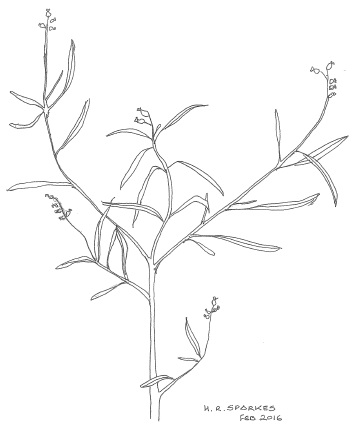I thought this topic would suitable for December as the 20th of the month is, according to British folk lore, a time when the veil between the material and the spirit worlds is permeable. With that in mind, here’s a little something from Martha Beckwith’s Jamaican plant lore which may help keep unwanted visitors (of a spiritual nature) at bay.
Beckwith wrote that Rosemary, sometimes mixed with cow dung, was burned in a house to drive away duppies
‘or sprigs of it are rubbed over the body or scattered about the house for the same purpose.’ (Beckwith, 1929, p. 94)
She was told by her informants that ‘”White people also use it”’ (Ibid., p.94).
Beckwith attributed the use of Rosemary to protect a person from malign influences was attributable to the plant’s strong smell as other plants with a pungent odour were used for similar purposes in Jamaica (Beckwith, (1928), pp. 26-27).
In British plant lore rosemary also can protect from spiritual and physical ills. For example, Margaret Baker notes that in parts of Devon people believed that planting a rosemary bush near a house would cleanse the house of evil and could keep witches out. Drinking from a spoon made from rosemary was supposed to protect one from poison (Baker, pp. 132-133).
In Britain there are Christian spiritual associations with rosemary – associations which may have travelled to Jamaica and played a part in its usage to repel malevolent forces. The plant’s blue flowers were once believed to have been white until, during the flight into Egypt, the Virgin Mary placed the infant Jesus’s clothes on a rosemary bush to dry. An alternate version holds that she lay her cloak upon it. In British plant lore, rosemary is believed to flower at midnight on Christmas Eve.
The caveat here is that in British rosemary is Rosmarinus officinalis whereas Jamaican rosemary is Croton linearis Jacq., a type of euphorbia. However, as both plants are similar in appearance, British settlers in Jamaica may have named Croton linearis Jacq. after a plant theory were familiar with. Therefore, it may not be impossible that the British spiritual associations with Rosmarinus officinalis were also applied to the Jamaican rosemary?

Sources
Martha Warren Beckwith, Black Roadways: A Study of Jamaica Folk Life (reprint, New York: Negro Universities Press, 1969, of orig. edn, Chapel Hill: University of North Carolina Press, 1929).
Martha Warren Beckwith,, with music recorded in the field by Helen H. Roberts, Jamaica Folklore (New York: The American Folk-Lore Society, 1928).
Margaret Baker, Discovering the Folklore of Plants (Oxford: Shire Publications Ltd, 2008).
[…] Aside from silver thatch, it’s hard to think of another plant that had as many uses as rosemary. Brooms made from the aromatic bristles were used to smooth the white sand yards of the olden days. It was used to wash hair, soothe skin irritations, added to smoke pots to keep mosquitoes at bay and steeped as a medicinal tea (McCubbin, 1995). In Jamaica, rosemary was also burned to ward off duppies (Nature and Supernatural Nature). […]
LikeLike